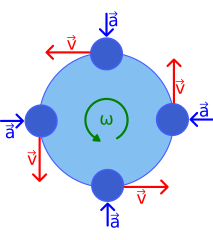The SC
ELITE MEMBER

- Joined
- Feb 13, 2012
- Messages
- 32,229
- Reaction score
- 21
- Country
- Location
The researchers are trying to find out the constance of the Radial Acceleration in some period of the bing Bang, that is the only context I have pointed out that involves the universe expansion.. you should also understand that an research on galaxies is done within the frame of the expansion of the universe.. the universe never stops expanding.. it is dynamic..You're taking that out of context and misunderstanding, radial acceleration is not the same as expansion. They are trying figure out if the orbit of objects within the galaxy (radial acceleration), is constant. It doesn't matter where or when the galaxy is found, they want to see if the radial acceleration remains the same.
Radial acceleration measures circular motion and is not related to the expansion of spacetime (Universe Expansion) which is linear expansion in all directions.
@Gillani88 , you sound smart, I think he's confused. And I'm not sure I explained it clearly above ^^^ or maybe I misunderstood @The SC .
"They are hoping to learn whether the same relation holds during the lifetime of the Universe."
Here is a good scholarly article read about the relation between the galaxies radial velocity and expansion of the universe:
"The nature of the cosmological expansion is a recurrent debate in cosmology. The most direct evidence for the expansion of the universe appeared with the first spectroscopic observations of extragalactic "nebulae" by Slipher (1915), which revealed that most of these objects have redshifted spectral features. Subsequent observations by Hubble (1929) put in evidence a relation between the distances of these "nebulae" and the observed redshift in their spectra. An interpretation of these observations was provided by Lemaître (1931), who showed that an expanding relativistic universe model could account for the observed radial velocity of galaxies and, in particular, explaining the fact that the redshift increases with the distance. Nevertheless, since the discovery of the redshift phenomenon, alternative explanations to the cosmic expansion interpretation have been proposed. Zwicky (1929) hypothesized that photons lose energy by interacting with the intergalactic medium, the so-called "tired light" theory and its major difficulty is the mechanism behind the loss of energy. Arp (1988) studied different groups of galaxies and remarked on some of them having the presence of objects with discrepant radial velocities. These observations led him and Burbidge to argue that some redshifts might not be cosmological in origin (Burbidge 2001, Burbidge et al. 2006). With the discovery of type Ia supernovae (cosmological "candles") at moderate redshifts, it became clear that most of the alternative theories of the cosmic expansion are unable to explain the time stretching observed in the light curves of these events (Goldhaber et al. 2001)."
http://www.scielo.br/scielo.php?script=sci_arttext&pid=S0001-37652015000501915
Last edited:




 is the accelerating distance between non-gravitational bound objects (galaxies and galaxy clusters). The radial velocity/acceleration remains unchanged within the galaxies.
is the accelerating distance between non-gravitational bound objects (galaxies and galaxy clusters). The radial velocity/acceleration remains unchanged within the galaxies.  ==>
==> 